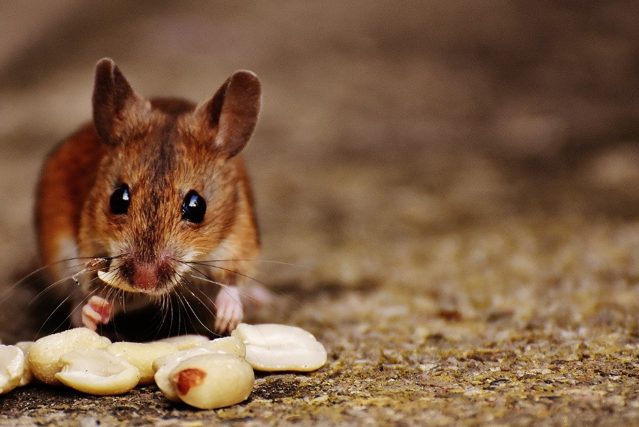Where humans are living and working, you may also find mice. All property owners can agree that the one thing that no one wants is mice in on their property. If you see one, you can believe there are more. Not only can they damage the reputations regarding sanitation, but mice may invite disease, affect those with allergy sufferers, and cause substantial damages to your property.
Don’t try to tackle your rodent problem on your own. Seitz Bros. offers residential and commercial customers exceptional techniques to find the source of your situation and offer a custom pest control plan.
The Most Common Mice in the Area
There are 70 different species throughout North America, but it’s highly likely to see all types in Pennsylvania and New Jersey. The four most common types of mice in the area are:
House Mice: Inadvertently brought to North America by European settlers, house mice found their way into homes, businesses, and farms. This mouse grows to 6 to 8 inches long with a 3-inch scaly, nearly hairless tail and has various shades of gray fur. This mouse is an omnivore eating fruits, vegetables, grain, and meat.
White-Footed Mice: Their appearance is like a deer mouse with a shorter tail, a reddish coat, and a white belly. Adults grow to 6 to 7 inches and prefer to live in wooded areas or a drier habitat.
This type of mouse lives in stone walls, rock crevices, under old boards, hives, tree cavities, and abandoned nests. They use runways of other small mammals to make their burrows.
Deer Mice: The deer mouse is 6 to 8.5 inches long with gray fur in its youth and gradually turns brownish-gray with white underbellies. They have large dark eyes well adapted to night vision. Deer mice inhabit farm fields, brush, and wooded areas.
Deer mice eat what’s available, including seeds, grains, soybeans, corn, berries, buds, nuts, and mushrooms. They also feed on beetles, grasshoppers, crickets, gypsy moths, earthworms, centipedes, slugs, spiders, and decaying flesh of dead animals. Deer mice locate most of their food by smell, although they possess sharp hearing and excellent eyesight.
Signs of a Potential Mouse Problem
Like other pests, mice look for food, water, and shelter. Once they enter your home, it’s challenging to make them leave. Don’t allow them to access everything they need to survive and breed. It takes a professional with the know-how to find the source of your mouse problem and give you a concrete solution.
Mice breed rapidly. Once you see a mouse, the infestation has begun. Here are a few signs that you have a mouse problem:
- Droppings
- Shredded paper, fibers, or plastic
- Musky odors
- Gnawed food packaging
- Damage to wires and cables
The Best Way to Deal with a Mouse Infestation
Keep your food and throw away garbage in tamperproof containers. Once you schedule a consultation, a Seitz Bros. will show you how to make your home inaccessible to mice and other rodents.
Your pest control professional will find where the rodents live, figure out how they entered your home or business, and plan to get rid of them.
A Health Concern
Mice pose that safety and health risk by invading your home. If someone sees a mouse in your restaurant, the health inspection department may shut you down. Make sure you take the best precaution to protect your property and the health of others.
You have a choice in Home Protection Plans with monthly or more frequent quarterly service. Plans are full coverage, including control services for mice throughout the year, and include unlimited re-visits by our technicians and services to seal your home against future rodent infestation.
There are many reasons to contact Seitz Bros. for professional mouse control services. Our experienced technicians are highly trained in the proper methods to remove rodents safely. Since 1975, our team has worked with residential and commercial property owners to keep their locations free from pests of all kinds. Schedule your free consultation at the first sign of a mouse problem.
What Are Some Early Warning Signs of Having Mice Pest Control in Pennsylvania & New Jersey
Serving Northeast & Central PA | Lehigh Valley | Pocono Mountains | Western NJ

